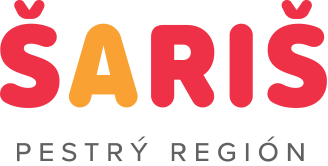The Wooden Church of the Protection of the Mother of God in Hunkovce can be found at the cemetery in the center of the village on a hill surrounded by trees.
According to previous research, the wooden church in Hunkovce dates from the end of the 18th century. The temple is divided into three parts. The vestibule located under the main tower initially served as a place for catechumens, i.e. those who were preparing for baptism, or for penitents. Another part of the temple, the nave, is connected to the vestibule. This is a place where believers participating in the ceremonies gather. The third and most important part of the temple is the shrine. The shrine represents the kingdom of heaven, i.e. the glorified Church. The sanctuary is separated from the nave by a high pictorial wall called the iconostasis. However, the iconostasis itslef is missing. Traditionally, the iconostasis would depict the icons of Christ, the Mother of God and the saints who through their life stories help believers lead better lives. The church is divided into three parts, has three rooms and three towers. The church was built from logs on low stone foundations. The whole body of the temple is lined with slabs and moldings. The tower rises above the vestibule. In the upper part it is widened – there is a small room now without the bells as these were removed from the tower long ago. The tower has a low, pyramidal roof on which sits an onion dome topped with a two-armed decorative cross with a bezel. The nave has two windows above the windowsill on the south side. The tented roof above the nave is divided into two parts. The roof over the sanctuary is pyramidal. The whole temple is covered with chipped shingles. The core of the temple – the iconostasis, the altar and other original decorations are missing. After repairs in 1922, it was agreed that the church would be sold and transferred to Ústí nad Orlicí in 1935, while the proceeds from the sale would be used to finance the construction of a new church. At the time of heavy fighting in the autumn of 1944, the church was severely damaged. In 1947 the church was repaired. In 1957, there still were valuable icons from the middle of the 18th century (St. Michael the Archangel, the Blessing Christ, Pokrov – the Protection of the Most Holy Mother) inside the church. However, these went missing. The icon – Spas nerukotvornyj, the work of Jakub Zesa from 1671, is now in the collections of the Šariš Museum in Bardejov. In 2010, the shingled roof and the entire cladding were replaced under the project the “Rescue of Wooden Churches included in the Carpathian Wooden Road”.
